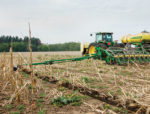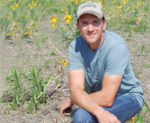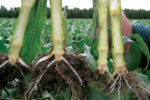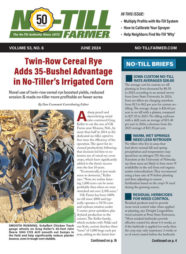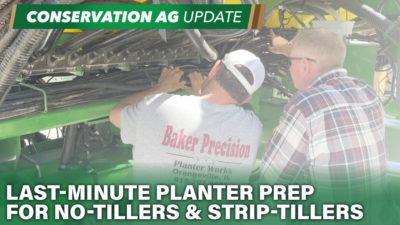Advertise Follow Us
Items Tagged with 'iron'
ARTICLES
Scientists: Glyphosate Contributes to Phosphorus Runoff in Lake Erie
Low soil pH and certain metals are causing glyphosate to release phosphorus from the soil, which is responsible for about 25% of dissolved reactive phosphorus runoff in the Maumee watershed.
Read More
No-Tillers Ready to Make Slight Cuts with Fertilizer
After increasing per-acre spends on fertilizer in 2014, no-tillers will try to trim expenditures mostly through cuts to soybean applications.
Read More
7th Annual Benchmark Study
High Yields Help No-Tillers Stay in the Black
Even as grain prices continued their slide, 8 in 10 no-tillers had a profitable 2014, and most plan to keep investing.
Read More
Succeeding at No-Till Without ‘Chasing Acres’
After nearly quitting on agriculture, Jonathan Cobb is rebuilding his family’s central Texas farm through no-till practices, intense cover-crop mixes and rotational grazing to amass ‘soil wealth.’
Read More
Less Iron, More Cover Tames Tough Plains Soils
Brian and Alan Johnson turned to no-till, cover-crop cocktails and CRP to reclaim saline seeps and improve productivity in tough growing conditions.
Read More
Proper Soil pH is Key to Molybdenum Availability
Most problematic for legumes, molybdenum deficiencies are sometimes misdiagnosed as nitrogen deficiencies, but with a soil pH greater than 6.0, a response to applications is unlikely.
Read More
Iron Availability Matters, But Plant Intake Varies
Obtaining iron-chlorosis crop ratings prior to planting, and choosing varieties and hybrids wisely, can help no-tillers avoid iron deficiency problems
Read More
Better No-Till Soils Require A ‘Balancing Act’
No-tillers should ensure farm ground is healthy and biologically active before turning to biological amendments, says a veteran no-till consultant.
Read More

